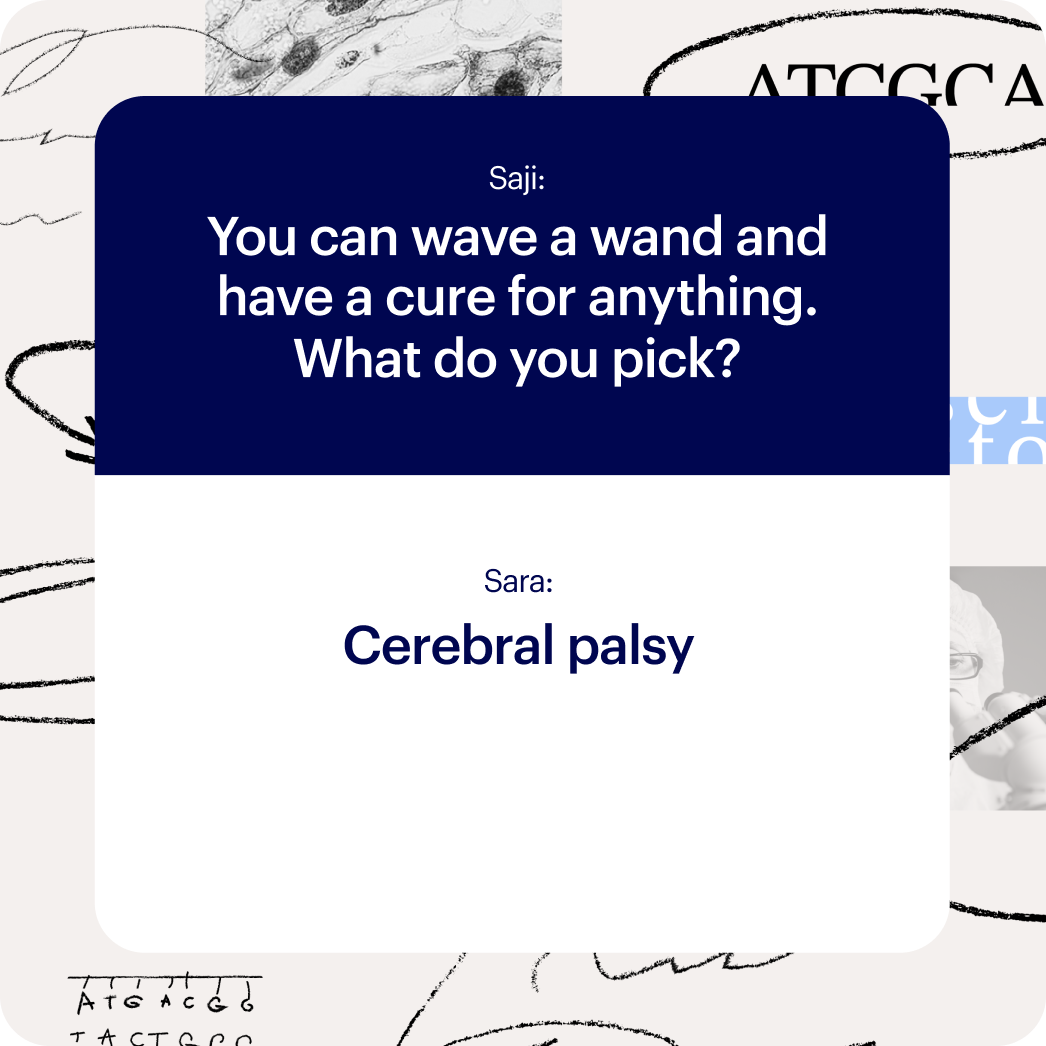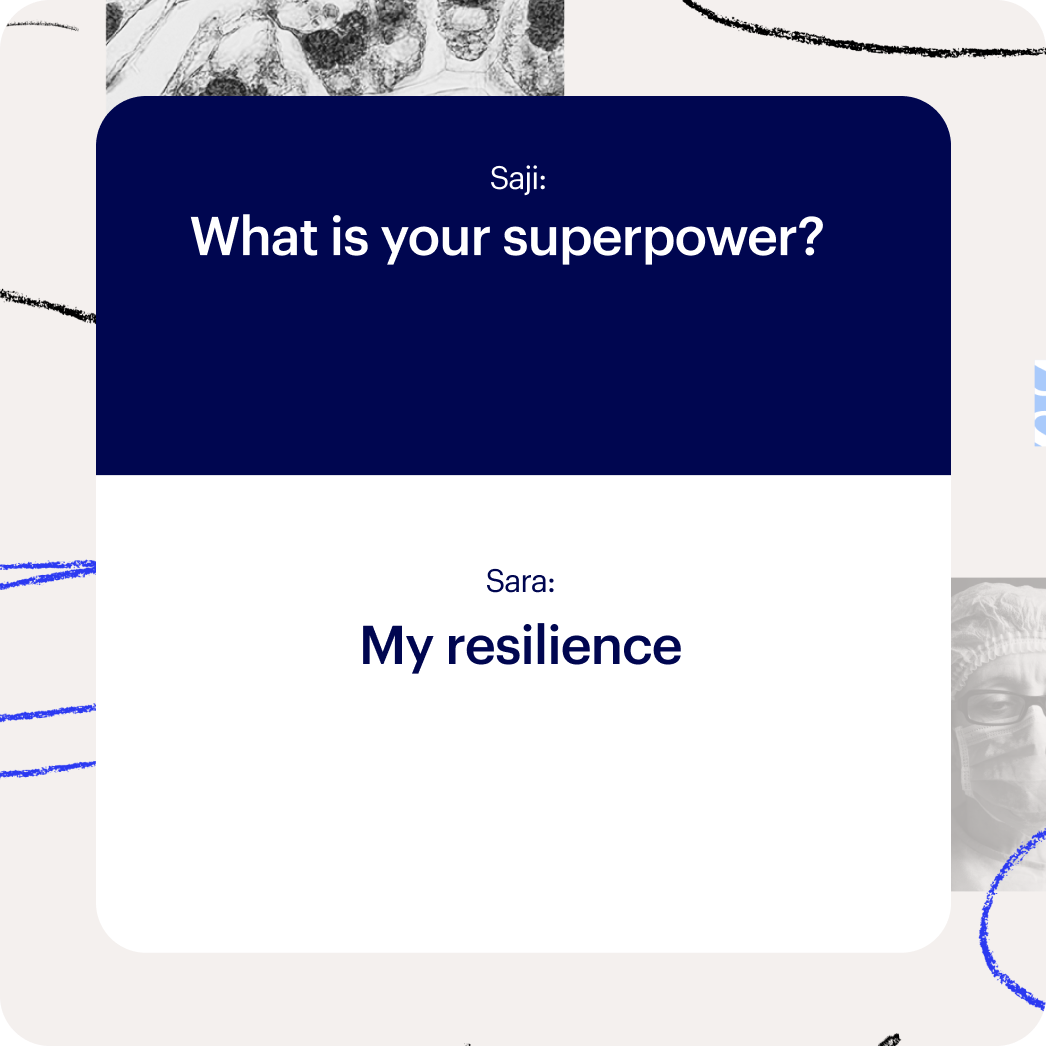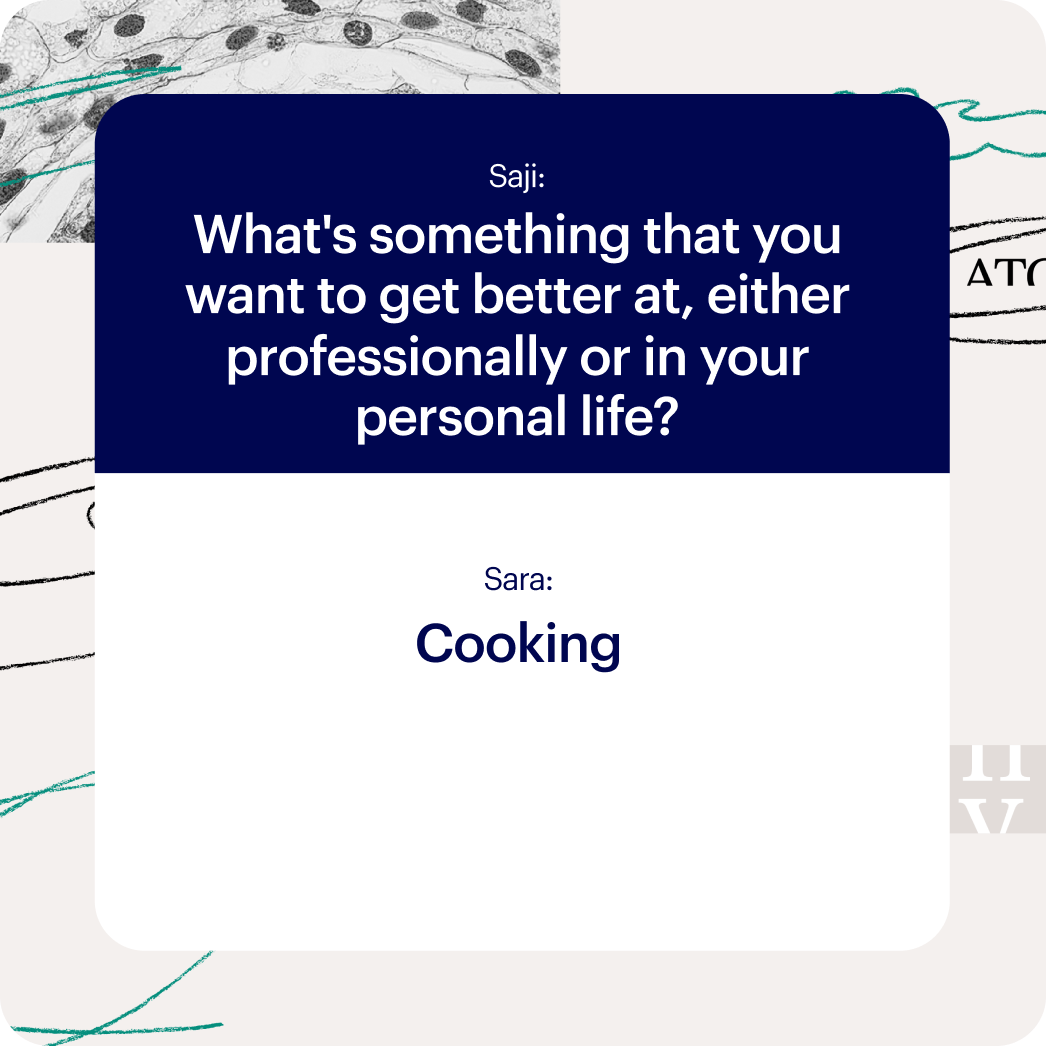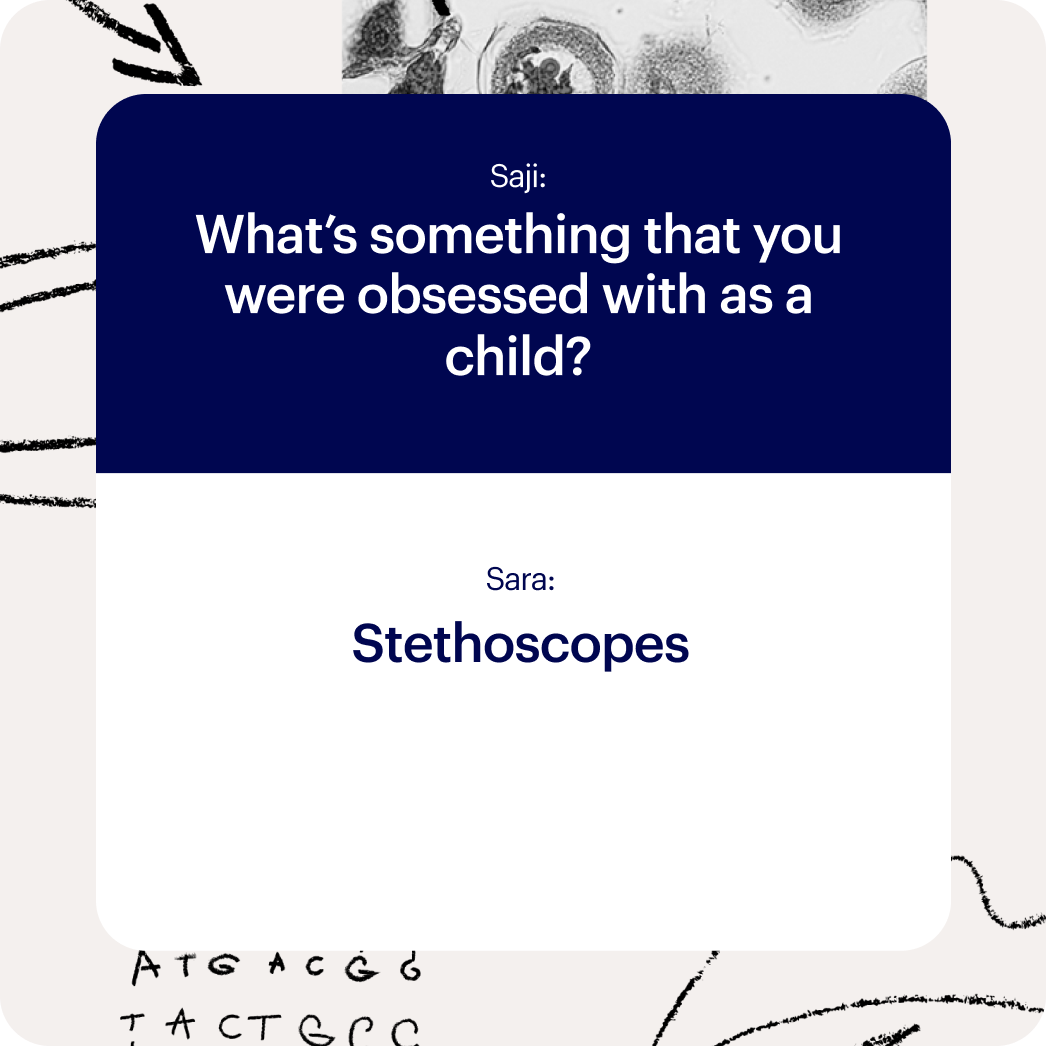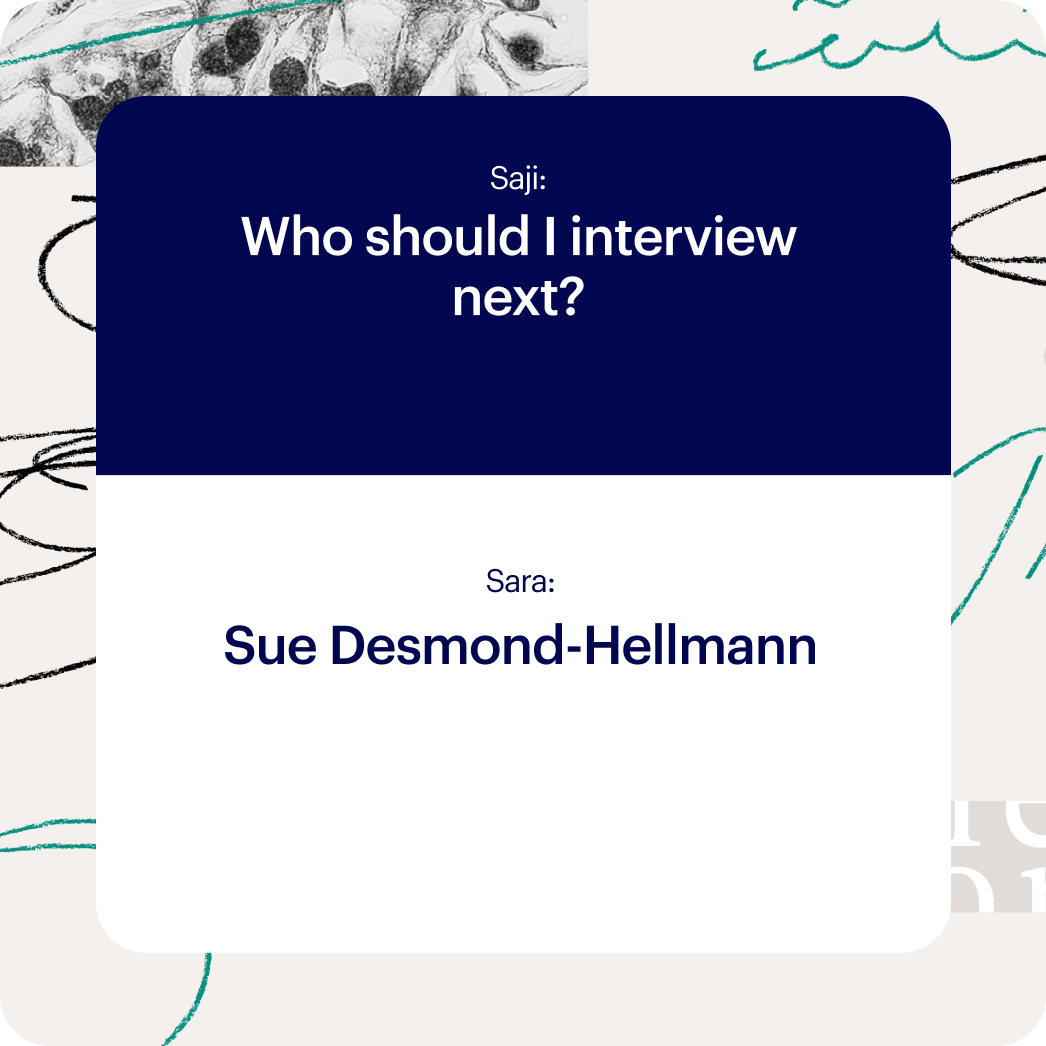With over 25 years’ experience leading R&D teams, Sara Kenkare-Mitra started in academia at UCSF, before becoming a scientist — and eventually SVP of Development Sciences — at Genentech. Throughout her career, she’s contributed to 15 drug approvals and over 100 IND/CTA submissions. Today, she’s President and Head of R&D at Alector, pioneering innovative therapies for neurodegenerative diseases.
Sara joined me to reflect on her journey, from the ups and downs of drug development, to lessons in leadership and resilience. — Sajith Wickramasekara
* Editor’s note: The conversation has been edited for length and clarity.
Turning a (nearly) failed program into a bestselling drug
Sajith Wickramasekara: You’ve contributed to 15 drug approvals. Let’s start with the one that almost didn’t happen: Kadcyla. I heard it was nearly shut down before becoming Genentech’s first antibody-drug conjugate. What gave you the conviction to keep going?
Sara Kenkare-Mitra: Kadcyla is a drug that’s used to treat women with HER2-positive breast cancer. This was around 2000. Antibody-drug conjugates were a field that had been around for a while; many people had tried to conjugate drugs to antibodies.
It wasn't an entirely new concept — it's just that nothing much had come out of it. Our antibody of choice was trastuzumab, a Herceptin-like antibody. And the idea was an elegant one: if you bring the emtansine and conjugate it to a trastuzumab antibody, you'd get a double whammy effect.
Sajith: What was the standard treatment at that point?
Sara: Herceptin was already approved and had changed the trajectory of women with HER2-positive breast cancer. This would have been the next steps.
We had created a conjugate that was being tested in animal studies. And I was literally on the program for maybe six months, when we found out that the safety of the molecule was awful. In fact, we had some really bad safety with that original molecule.
We hadn't even gone into patients, and the company basically said, “This is too risky.” And remember, we’d been working on monoclonal antibodies, which in general, are much safer. Not that they don't have side effects, but unlike small molecules or chemotherapy, they’re so specific.
Management, at the time, didn't feel like they wanted to invest more. But myself and a few other folks wanted to understand why we saw what we saw.
We just couldn’t explain it. And instead of just shutting the program, we had a hypothesis that related to the chemistry of the molecule, the stability of the linker, etc.
We said, “We would love to try a little bit more before we throw in the towel.” And originally, we got a lot of pushback. There was no interest; no one wanted to do this.
But we put a quick proposal together and asked for a finite amount of money: Give us six months to test out a few experiments. It took a little bit of influencing, but we were able to convince management.
And we were able to demonstrate that by changing the chemistry, you could get rid of the safety issue without impacting the efficacy of the molecule.
It was just an incredible feeling for us, to know that this could have been a dead project. And we not only brought it back, we were really excited by the technological advance we had made.
At the time, we didn't know this would be a drug, but it passed a huge hurdle that allowed it to be tested in patients. If you look back, that one decision changed the trajectory.
Sajith: Makes you wonder how many other medicines like that almost made it to the clinic. Was it a controversial decision to revisit something with a bad safety profile? Do most programs just get canned at that point?
Sara: I think it really depends. Genentech was an amazing place to be — very science-driven, very data- and evidence-based. As long as we came in with a hypothesis-driven approach to solving something, they allowed us to take risks.
So I think you’re right. I'm sure there are drugs that never make it, because people give up.
“I always say this is an industry of guts, an industry of resilience. You just don't know when a risk will pan out, because the time frame is so long. But you have to take those risks with some conviction that even if you fail, you'll get up and find a way forward.”
Learning from industry legends
Sajith: When you started there, Genentech was just beginning to ramp up its cancer program. Under the leadership of Sue Desmond-Hellmann, Genentech grew to this powerhouse in oncology, impacting the lives of millions of cancer patients. What lessons did you learn from Sue?
Sara: Firstly, having Sue as a mentor and leader at the time that I was at Genentech was pretty special. It’s clear from her resume and what she’s done, of course. But even as a human being, she's very impactful, accessible, and real. I really admired a few qualities, which many of us, not just me, try to mirror.
One, is that she had this true passion for patients. No matter what the topic was, no matter what the meeting was, she had this uncanny ability to connect it back to patients. And she did it in such an incredible manner that I don't think I've seen anybody else do since.
Sajith: When you say it like that, it sounds so obvious. But I'm guessing it's really easy to just get lost in the science, or maybe the commercial aspects of medicine?
Sara: Totally. Even with organizational decisions, she’d bring it back to the patients. It was incredible to watch. Everyone, even the most junior employee, the most non-science based employee, would be able to connect with what she was saying.
Sajith: Let’s talk about another famous leader from Genentech. When Art Levinson became CEO, one shareholder told the WSJ: “Art is a fabulous scientist, but not in my opinion, one you would suspect could run this company.” He went on to turn the company around — 13 new FDA approvals in 14 years, numerous awards like “America’s Best CEO.” What was so special about his leadership?
Sara: He was a very understated, typical scientist. I don’t think he ever took off that cape as a scientist, even when he was CEO.
He used to attend all of the scientific reviews. And I think that was a model in which most leaders at Genentech operated also — that you have to get your hands wet and know what's going on in the science.
He had an uncanny ability to ask the most astute questions, the type of questions that perhaps nobody wants to ask. But he did it with a lot of respect.
There are people who ask questions which make you sound like you’re dumb, particularly if they are themselves very educated. But Art asked in an extremely respectful manner. It almost came across as someone that's just curious. And that, I think, was his ability; people just liked Art.
He also called out BS all the time. I have numerous memories of him sending emails to the entire company. For example, there was a time when people started using words that were out of the common vocabulary, which really bothered him. Words like “leverage” — corporate speak.
So he sent an email to everyone, saying, “I've invented this game called ‘buzzword bingo.’ Anytime you're in a meeting, if you hear a buzzword, I suggest you stand up and say bingo.” It was hilarious.
Sajith: I'm sure some of the senior-most executives are probably the guiltiest of “buzzword bingo.”
Sara. Yes. Of course, we were commercializing and language was changing from being very scientific, to having more corporate business aspects.
Now it was fun for a while. We all laughed. I saw a number of meetings where people did the bingo thing, but the reality was that he brought attention to something that he cared about — the culture of the organization. And this wasn't someone in communications helping him; he literally would sit and write that email.
He did this on other occasions too. For example, there was one time where he said, there are way too many consultants that people are using. So he came up with a policy where, in a slide deck, you had to actually say “no consultants used.”
That was Art. And he did those things because he really cared about the culture.
Sajith: People still talk about the culture of Genentech during that era — and it’s been decades.
Sara: He was fearless in that regard. It mattered so much that he didn't think twice. He needed to let the company know. And I think that's exceptional.
Winning for patients, even if others take it across the finish line
Sajith: You’ve talked before about “failing fast, failing early.” Can you give me an example where a failure felt like a win or resulted in a critical insight?
Sara: Oftentimes in biotech, no failure is a complete failure where you don't learn from it. In every situation, you learn something either about the biology, or about the drug you developed. Whether you decide to pursue it, that's a different issue.
One example that comes to mind is a drug called lebrikizumab, an IL-13 antibody. My team was very involved in the development of this drug, which was being developed for treating asthma. And that was just the first indication; we knew that IL-13 had a role in a number of inflammatory immune conditions.
We had two identical phase III studies, but one of them was successful and one of them was not. There was no way we could file in asthma for that.
These were pretty big studies. We had spent a lot of time thinking through the manufacturing, and it was hugely disappointing to get to this point. Genentech decided to out-license lebrikizumab to Dermira, which then got bought by Eli Lilly.
We actually had done some work with atopic dermatitis, and it looked promising. Dermira took it into phase III, and it turned out to be a fantastic drug. Today, lebrikizumab is on the market as a drug for treating atopic dermatitis.
So this is a great example of where you think something is a failure, and even though you don't take it forward, ultimately, it's a good thing for patients.
“Every time I see lebrikizumab out there as a Lilly drug, it brings a smile to my face because I know that we had a huge hand in getting it to that point — even though we didn't make it a drug at the end of the day.”
Following your curiosity — and unmet need
Sajith: A lot of your early training was actually in small molecules. Over time, antibodies and other large molecules became a huge part of your repertoire. What was that journey like?
Sara: My original training has been in classical medicine: I was a pharmacy student in India, where I interned in making tablets, formulation, etc. When I did my graduate degree, it was still related to small molecules, and again, in my postdoctoral training and fellowship. Most of the drugs I got exposed to were small molecules.
Sajith: There were monoclonal antibodies approved at the time, right? But biologics were a small part of the pipeline.
Sara: Very small. The reason I came to Genentech is because I saw a news article in the San Francisco Chronicle — a full-page article that described the approval of Herceptin. It said something like the “magic bullet” for women with HER2-positive breast cancer.
Sajith: That's not an overstatement.
Sara: It wasn't. And it just caught my eye. First, the concept that you could treat women with a very specific type of tumor.
Sajith: Which we totally take for granted today, by the way.
Sara: But at that time, women that had this type of cancer had the worst prognosis among women with breast cancer. And now you've got a drug that is so specific to the HER2 protein. I thought that was fantastic.
So when I went to Genentech, I started as a small molecule person. But I was intrigued by monoclonal antibodies. And so when I got an opportunity to get on a monoclonal antibody program, I grabbed it.
I knew nothing about large molecules: How do you make them? What's unique about them? How do you study them? That took me down the path of monoclonal antibodies, and then ADCs, etc.
Sajith: There's very good career advice in there about maybe not even being focused on the exact role you have at first — just being on the winning team that’s the right one to be a part of.
Sara: Yes, I think learning is really important. When I want to understand something, I'm going to follow it. I'm going to surround myself with people that know a lot about it. And what a wonderful place to be at Genentech.
Sajith: Tell us about the decision to run R&D at Alector. Neuro is a category that, at the time, was probably not a very loved category. And you still chose to do it.
Sara: For me, that decision had two parts to it. I'd reached a point at Genentech where I was looking to grow further. I wanted to be the head of R&D, because to actually have final accountability was something that I wanted to challenge myself with. I was confident I could do it, because I'd been part of it all, but I never was the final decision-maker.
The second thing was the therapeutic area. I could have gone into oncology, because my majority of my career was in oncology. In my 24 years at Genentech, we changed the face of oncology. Neuro, on the other hand, is an area where the unmet need is still significant.
There's something like 50 million people worldwide with dementia right now, which is going to triple by 2028.
Sajith: It's a huge looming problem.
Sara: Huge. If you look at the number of people over the age of 60 today, one out of six has Alzheimer's disease, or risk for Alzheimer's disease.
And then on top of that, neuro is actually pretty large. There's ALS, Parkinson's, and if you include neurologic disorders in children and growing adults, it's a huge problem.
Sajith: And very unknown, with very few successes.
Sara: Extremely high risk. People asked, “Why go into neuro?” But that is precisely the reason, because there's a huge opportunity to make a difference. I'm not saying that I necessarily will be the person to make that difference, but even if I chipped away at it, it could be huge.
A new era for neurotherapeutics
Sajith: Through the 2010s, many large pharma companies got into neuro, but then got out. Recently, I would say neuro’s beginning to see a bit of a renaissance. What's driving the increased optimism?
Sara: There's a lot more known about the genetic underpinnings of the disease and risk profiles for Alzheimer's, Parkinson's, etc. That's number one.
Number two is the technologies. Now we’ve got gene editing, siRNAs, oligos, and a bigger repertoire of technology. The third thing is biomarkers, the understanding and number of which has grown in the last decade or two.
Sajith: If you're going to run a trial with any of these disorders, what are the endpoints? There’s very little to measure against, right?
Sara: It's a huge problem. To know which ones are actually predictive of the outcome, that's a big challenge. But you have way more of that now. Finally, I think that the regulatory agencies have also shown more flexibility.
Particularly for more rare neuroindications, there's been a greater appetite to look at biomarkers as surrogates for approval, rather than having a clinical endpoint. For example, to get approval based on a biomarker that's been clinically validated.
Experience matters in the long game
Sajith: How do you teach resilience and get people to embrace failure in a smaller biotech?
Sara: I'm still on a journey, I don't have all the answers there. I'll say that resilience is something that you build with experience.
You build the confidence that no matter what happens, that companies go through all phases. They go up, they come down. But when you go down, you have the ability to come up again, and that's exactly when resilience comes into the picture.
I often talk about sticking it out and waiting because, again, our field is a long game. Like when I had that experience with Kadcyla, I didn't know it was going to be a drug. But I stuck with it, the company stuck with it. That allowed it the time to become a drug.
But teaching that is not easy. I think the best way is to model it yourself, and make sure others see that you remain excited, that failures are opportunities to be embraced.
Sajith: Is there anything that smaller biotech startups should learn from larger companies?
Sara: Sometimes I see smaller biotechs that may not respect the depth that comes out of a large company. There's process and waste,, but there's also an incredible amount of depth and experience. And I think small companies can benefit from that experience, even knowing that people coming from larger companies tend to have a process mindset, rather than a project mindset.
Sajith: Can you say more on that, the process versus project mindset?
Sara: As larger companies scale, leaders tend to spend more time on the process rather than on the actual work. It's just the nature of scaling.
Even the brightest minds I've seen in larger companies become process leaders. But if your people are spending more time talking about the process of how the work is done, rather than doing the work itself, it’s a warning sign. Process is helpful, but it should be in service of the work.
Sajith: It's probably good advice for anyone going from a large company to a small one, to check yourself on that.
Sara: Most people adjust very quickly. They actually love it — I love it too. It's so freeing.
Sajith: No one gets out of bed every day to work on process.
Sara: Even in my role as president of Alector, 99.9% of my time is spent on science. If large companies could do that, even a little bit, it would make a difference.
Navigating work/life responsibilities
Sajith: I heard you paused your career at one point for family responsibilities. Many say it's hard to return to science after stepping away, but you came back and became a super successful leader. How did that shape your views on company culture?
Sara: This was very early in my career, before I went to Genentech, that I had to take a couple of years off. It was a necessity.
But, I thought this is the end of my science career. I didn’t think I'd ever come back, because there's no way anyone would take me back after that break.
It wasn't true. In fact, I got a call from Genentech, out of the blue. I had to give a presentation as a scientist, and I had not looked at a single scientific presentation for two years.
Sajith: So you were fully family-oriented for two years.
Sara: I was a mother, I had to do that, and I literally completely cut off.
But I got the job. I made the decision to go back, which was also very hard. So for me, it's about appreciating that there's always so much going on with an employee that you're just not aware of. That experience made me a more empathetic and compassionate leader.
I'm still very pragmatic and a realist, but at the same time, you need to understand that work/life balance means different things to different people. You have to be able to hear people out and accommodate them. I believe that people will go above and beyond, if you can understand that balance and help them attain their goals.
The biggest pitfall for early career scientists? Impatience.
Sajith: You've said that leaders should spend half of their time mentoring individuals on their team and helping them grow. What are the most common weaknesses you see in early career scientists?
Sara: I think that these days, there’s a level of impatience that I see — impatience of being at a certain role or level. For me, mastery of the subject, whether you're a drug developer or a tech developer, is so important. It could be anything, but you better be the best in that area. Once that's solidified, everything else can be built on top of that.
When someone’s early in their career, but they're already rushing to be vice president, or run a team, it's good to keep this in mind. If your foundation is not solid, then it's a house of cards; it's just going to come down at some point.
That's not something that people like to hear, because it also means you have to spend a lot of years building that depth. It's not going to come in a day.
You also need the “stick with it" factor. That means you can't just get a job for a year and then find another job for a year.
Good things take time. Did you really get the experience? Did you really see something go from A to B? Did you have many failures? If you didn't, then you really haven't built resilience and experience.
So that's what I talk about. I don't think it always lands well, to be honest with you. But if even one person believes in it and learns from it, I think that would be a positive.
Being the only woman in the room
Sajith: There are probably times in your career where you've been the only female leader in the room. You’ve even been told to change your personality, to become more aggressive and loud. What was that like?
Sara: Early in my career, this was very much the case where I would be the only female leader in the room. When I was told “be more aggressive, be more loud,” I really had to pause and ask myself if that's something I wanted to do. And I didn't. I actually did the opposite, which is to say: I need to help the room adjust to me.
“The more I see people being their authentic self — whether it's a female, or anyone bringing their authentic self to the table — that to me is a true metric of success.”
It all comes back to curiosity
Sajith: So you've wanted to be in medicine for a long time. It sounds like you had a physician grandfather, before you came to the U.S. for grad school and climbed the ranks of R&D. Is there anything you’d change about your journey? What advice would you give?
Sara: I wouldn't change a thing, actually. I have a lot of gratitude for my journey. I don't think I designed the journey — I followed my path with curiosity, one step at a time.
I followed the tenets that I believe in: Be curious, try to learn from everyone, you're not the smartest person in the room, and always be a seeker of knowledge. I think that will take you places.

